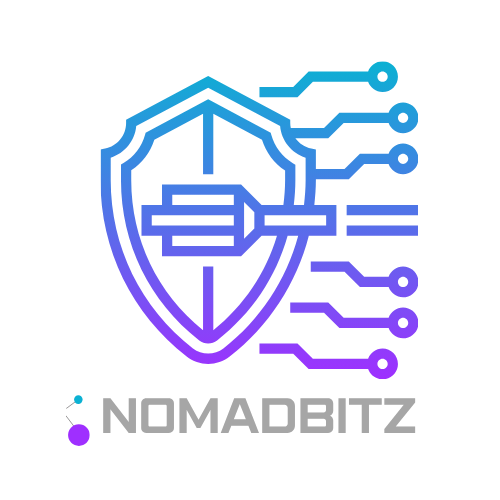Anúncios
Are you ready to guide your team through AI acceleration and shifting markets? Many leaders face fast change. You need clear priorities to keep your work and teams moving forward.
This article is a practical listicle that points you to core areas—from AI fluency and communication to change management and strategic planning. Wiley research names Strategic Vision, Effective Communication, and Change Management as top areas to focus on.
Recent Korn Ferry data shows most CEOs expect AI to boost value soon, and Gallup links engagement to fewer defects and higher productivity. Use those facts as a guide, not a guarantee.
What you’ll get: short, actionable steps, quick examples, and metrics to test on a small scale. Try ideas, measure outcomes, and iterate based on evidence. The balance of human-centered practice and tech tools will help you create clarity, alignment, and momentum.
Introduction: Why leadership skills 2025 matter in a shifting workplace
Today you face rapid AI adoption and shifting employee expectations that change how work gets done.
Anúncios
The stakes are clear. You operate in an environment defined by fast tech adoption, hybrid debates, and changing expectations. That makes it vital to focus on a short list of high-impact priorities.
What this guide gives you is an actionable roadmap built from current research. It highlights what leaders need to prioritize and shows how to apply ideas with minimal disruption. Each section pairs principles with quick “do-now” moves and light examples to help you move faster.
How to use this listicle
- Skim the section most relevant to your role today.
- Pick one or two practices to try this week.
- Define a simple metric, run a small test, and revisit weekly to iterate.
Context, compliance, and mindset
Consider your team’s context and company rules before you pilot changes. Document assumptions and constraints. Be empathetic—people react to change differently. Adjust pace and communication to fit diverse needs while keeping accountability.
Anúncios
Keep a growth mindset. Treat missteps as data, gather feedback early, and share results transparently. Act this week: pick one practice, measure impact, and use the insight to refine your next step.
AI and Technology Fluency: From experimentation to informed decisions
You don’t need to be a data scientist to build useful AI fluency. Start small, stay ethical, and focus on outcomes you can measure. Practical learning helps you make better decisions and spot real opportunities for your team.
Practical ways to build literacy
Run a weekly 30–60 minute learning sprint. Read a reputable primer, try a tool tutorial, and note one question to ask your engineers. Pair with a data partner to map a single, low-risk use case and create a one-page risk checklist.
Use cases to pilot now
- Analytics: simple forecasting dashboard with human review.
- Workflow automation: triage service tickets, escalate edge cases to humans.
- Customer insights: sentiment tags on feedback, audited by your team.
Metrics and risk controls
Define metrics up front: cycle time saved, error rate, adoption, and stakeholder satisfaction. Track monthly and document unexpected outcomes.
- Create guardrails with IT/legal: data privacy, transparency, rollback plans.
- Publish a one-page internal brief to close the strategy awareness gap and invite feedback.
- Set thresholds where human judgment prevails to manage bias and drift.
Leaders must model curiosity, ethical use, and transparency. Use short experiments tied to real opportunity—cost avoidance or better customer experience—to test, measure, and scale responsibly.
Adaptive Leadership and Innovation Culture
Building a culture where curiosity wins starts with one simple habit you can try this week. Small, repeatable moves create momentum and help your team handle change with confidence.
Fostering learning agility and curiosity on your team
Normalize learning. Create a weekly “curiosity slot” where each person shares one insight from a customer call, data point, or trend.
Rotate facilitation so everyone practices clarifying goals, aligning tasks, and summarizing decisions. This frames adaptability as a team sport and spreads experience across the group.
Designing lightweight experiments and removing obstacles
Use a simple experiment template: hypothesis, action, timebox (2–4 weeks), owner, and success metric. Keep cycles short to preserve momentum.
- Map the top three bottlenecks (approvals, data access, tooling) and fix one per sprint to signal support for experimentation.
- Reward learning, not just wins—share well-run tests that taught you something valuable.
- Anchor innovation to customer outcomes: define the problem, the change you want, and the metric that matters.
Measure progress. Track leading indicators like experiment throughput, cycle time, and decision clarity. Use retrospectives to capture changed assumptions and the next test.
Strategic Vision and Planning in an AI-accelerated market
Start by turning a one-line future statement into three concrete priorities that guide your next 90 days. Draft a crisp vision (one to two sentences) that says what will change for customers and the business.
Turn vision into quarterly goals by picking three outcomes tied to customer, revenue, or efficiency. For each goal list a KPI, baseline, target, and a single owner so leaders and teams know who makes the decisions.
How to keep execution simple
- Run a quick prioritization: impact, effort, risk — then publish the trade-offs.
- Create a one-page plan per goal: problem, bet, milestones, and risks.
- Pick one AI-accelerated opportunity that links to a goal (example: improve forecast accuracy).
Schedule monthly reviews to inspect KPIs, reassign resources, and choose to continue, pause, or stop based on evidence. Document assumptions, run short tests, and tie learning to growth.
“A clear, measured plan makes work visible and keeps teams focused on outcomes.”
Wiley ranks strategic vision top among leadership skills, and Korn Ferry data ties strong strategic capability to higher revenue growth. Keep the narrative simple, cascade goals to team backlogs, and revisit the vision twice a year.
Effective Communication that builds clarity, trust, and engagement
Clear, regular communication turns uncertainty into predictable steps your team can follow. Wiley lists effective communication among the top three areas to master, and Gallup ties better engagement to real gains in productivity and reduced defects.
Use a simple message map: a headline, three key points, and one clear ask. This helps employees absorb decisions quickly and act with confidence.
Set predictable cadences — weekly updates, monthly town halls, and quarterly AMAs — so teams know when to get answers. Tailor channels: async docs for final decisions, meetings for debate and alignment.
- Practice active listening: summarize what you heard and confirm next steps to build trust and cut rework.
- Recognize contributions specifically: state what happened, why it mattered, and the impact to boost engagement.
- Make ambiguity visible: say what is known, what is unknown, and when you’ll revisit the topic.
Encourage upward feedback with anonymous forms and open office hours. Run short pulse checks on clarity and confidence and adjust formats based on the data.
“Consistent, simple messages help people do their best work and reduce confusion.”
Coach managers to cascade updates so local context lands without losing the core meaning. Document decisions in a shared space to preserve context and help new team members move faster.
Change Management as a core capability
Effective transitions hinge on a simple playbook: explain why, map who matters, and listen fast.
Start small and ethical. Craft a one-paragraph case for change that names the problem, the desired outcome, and the risk of doing nothing. Tailor that message for key stakeholder groups.
Simple change playbook: case for change, stakeholder mapping, feedback loops
Map stakeholders by influence and impact and set clear owners for each relationship. Use short pilots with weekly debriefs to surface issues early.
- One-page case: problem, outcome, risks.
- Stakeholder map: owner, engagement cadence, success measure.
- Feedback loop: quick surveys, listening sessions, pilot debriefs.
Maintaining morale and momentum through uncertainty
Equip managers with toolkits—talk tracks, FAQs, and timeline slides—so your teams hear consistent answers.
- Celebrate small wins and name contributions.
- Schedule targeted training for likely friction points.
- Track adoption metrics: usage, proficiency, and sentiment.
Remember: Wiley flags change management as a top leadership skill. Managers spend meaningful time on conflict; basic conflict development frees up time and reduces escalations. Use data-driven checkpoints and protect capacity by sequencing work.
“Measure progress, adapt quickly, and keep morale visible.”
Relationship Building and Trust as performance multipliers
Consistent, simple practices make trust a daily habit rather than a one-off goal. For you as a leader, small rituals drive stronger relationships and steady performance across the team.
Rituals that strengthen connection
Schedule one-on-ones focused on career goals, strengths, and blockers so each employee feels seen. Keep notes and follow one concrete action between meetings.
Run a weekly “wins and learnings” slot. Share one success and one lesson to build transparency and trust.
- Start meetings with a quick round of priorities and needs so colleagues can offer help.
- Use peer recognition shout-outs tied to specific behaviors to boost engagement and appreciation.
- Co-create team norms on communication, responsiveness, and decision rights to cut friction.
Offer mentorship or buddy pairings to speed onboarding and widen internal networks. Add cross-team coffees to improve information flow beyond your immediate group.
Track relationship health with short pulse surveys on belonging and trust, act on results, and report back. Embed a quick psychological-safety check in retros: ask whether people felt safe to speak and what would help next time.
“Strong relationships correlate with resilience during change and better collaboration.”
Decision-Making and Critical Thinking under pressure
When pressure mounts, a short decision loop helps you act with clarity and avoid costly hesitation.
Use FrED: Frame the true problem, Explore multiple options and criteria, Decide and record explicit trade-offs. This slows fast thinking and makes the logic visible.
- Classify the choice: reversible vs. irreversible, then match speed and rigor.
- Clarify goals and constraints up front so stakeholders know what matters.
- Run a pre-mortem to surface failure modes and mitigations before you commit.
In practice: involve diverse perspectives to reduce blind spots. Pair intuition with data by setting threshold metrics that trigger a revisit or rollback.
- Log assumptions and the decision in a shared place.
- Set a review date to reassess outcomes and adjust course.
- Use after-action reviews to measure decision quality and improve the process.
“Good decisions balance conviction with adaptability; leaders must communicate rationale and review points to keep trust intact.”
Leadership in Hybrid and Remote Work Environments
Hybrid arrangements ask you to design clear norms that protect deep work while keeping teams connected. Start by co-creating simple rules with your people so expectations feel fair and practical.

Flexible norms that balance performance and employee expectations
Co-create core hours, focus blocks, and meeting rules. Make these norms visible and revisit them quarterly. Define the on-site moments that matter, such as planning or demos, and keep other days flexible.
Tools, rituals, and skills for distributed teamwork
- Adopt a single operating system: clear goals, roles, and cadences so teams coordinate without constant check-ins.
- Standardize docs, boards, and chat tools and run short training sessions to boost adoption.
- Schedule rituals: virtual standups, demo days, and social check-ins to keep progress visible.
Measuring outcomes: engagement, productivity, retention
- Track engagement pulses and retention trends monthly.
- Use productivity proxies like cycle time and throughput to spot bottlenecks.
- Give managers playbooks for hybrid performance conversations that combine data and empathy.
“Measure what matters, iterate policies with employee feedback, and protect time for deep work.”
Conclusion
Pick one actionable experiment this week that balances people needs with ethical controls. Tie it to a single metric and a short timebox so you can learn fast.
Wiley points to strategic vision, clear communication, and change management as top areas to prioritize. Korn Ferry highlights flexibility and AI readiness, and Gallup links engagement to better performance and growth.
Pair clear intent with small tests, guardrails, and honest reviews. Work with managers and cross-functional partners so solutions scale beyond your role. Share results across your company to build clarity and momentum.
Change takes time. Review data monthly, adjust plans, and keep experiments frequent. Your future success grows with steady practice, measured learning, and focused development.



